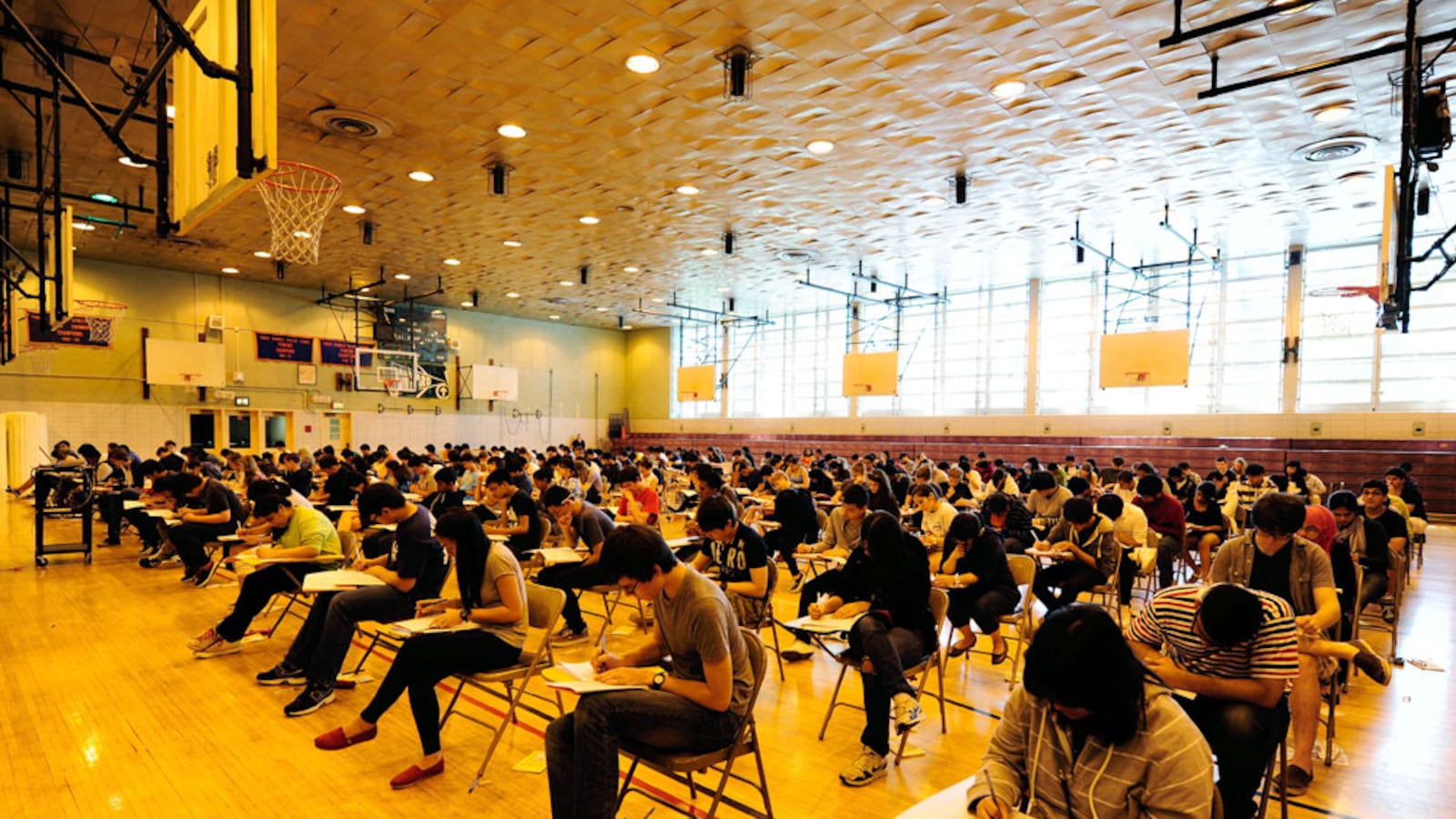Despite sustained pressure on the city to increase diversity to the city’s most elite public high schools, the already-small number of black and Hispanic students winning seats fell this year, highlighting Mayor Bill de Blasio’s struggle to fulfill his promise to make those schools’ populations more reflective of the city.
Just 4 percent of offers to the eight specialized high schools where admission is based solely on exam scores went to black students, while just over 6 percent went to Hispanic students, according to data released Friday by the education department. Together, those groups represent about 70 percent of the city’s public-school population.
One of the schools, Staten Island Technical High School, did not have a single black student receive an offer this year, down from 10 offers last year. And just 23 black and Hispanic students won seats at the most prestigious of those schools, Stuyvesant High School, compared to 31 students last year.
On the campaign trail, de Blasio promised to overhaul the way students are admitted to those schools by replacing the single test with multiple criteria, such as grades and work samples. However, a bill in the state legislature that would have instituted such a change seems to have stalled, and de Blasio has not focused his lobbying efforts in Albany on reviving it.
When the offer numbers were released last year, Chancellor Carmen Fariña proposed several possible ways to boost diversity at the specialized schools, such as expanding a test-preparation program and considering changes to the admissions system. However, even as the share of offers to black and Hispanic students declined this year, Fariña did not put forward any specific plans to reverse the slide — instead suggesting that the expansion of pre-kindergarten would help remedy the problem over time.
“We continue to review a variety of strategies to foster diversity at these schools,” she said in a statement Friday. “Still, we know that the best way to promote diversity at these schools is to ensure that every students gets a high-quality education starting in pre-K.”
The education department also released a different figure, which highlighted one area of diversity where it is making progress: the number of students with disabilities at selective high schools.
This year, 2,534 students with disabilities received offers to screened schools, which are separate from the specialized schools and base admissions on multiple factors, including state test scores, class grades, and attendance. That number is up from 919 students in 2012, when the previous administration ordered those schools to begin enrolling more students with special needs.
Still, the glaring lack of racial diversity at the specialized schools represents a formidable challenge for de Blasio, whose son attended the largest of those schools, Brooklyn Technical High School. During his mayoral campaign, de Blasio insisted that the schools “have to reflect the city better.”
Out of 27,000 eighth-graders who took the two-and-a-half-hour admissions exam this fall, just over 5,100 students scored high enough to receive offers. Nearly 54 percent of those students were Asian, a group that accounts for just under 16 percent of the citywide student population. About 27 percent of offers went to white students, who represent roughly 15 percent of all students.
“It’s important that our City’s specialized high schools reflect the diversity around them, and we are committed to achieving that without impacting rigorous standards,” Fariña added in her statement, hinting at the concern among some alumni that replacing the test-only admissions system would result in lower standards. They insist that a single entrance exam is the most fair and objective system.
The department also announced Friday that 93 percent of the 76,487 eighth-graders who submitted applications in December have now been matched with a high school, which is about the same percentage as last year. About three-quarters of those students received one of their top three choices (they are allowed to select up to 12 schools).
That leaves roughly 7 percent of students without matches. Those students will participate in a second admissions round, which is also open to students who are unhappy with their offers.
The city will host fairs on March 12 and 13 where students can meet representatives of schools that still have available seats. Then they must submit their second applications by March 18, and wait for a match in May.
Correction: This story has been corrected to show that just over 6 percent of offers to the eight exam-admissions specialized high schools this year went to Hispanic students, not 7 percent.

